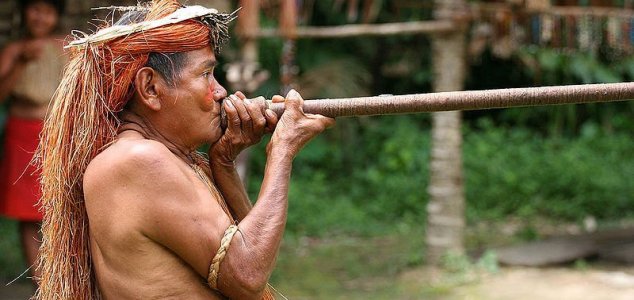Archaeology & History
July 23, 2015 · 158 comments
158 comments

The inhabitants of the Amazon may have originated in Australia. Image Credit: CC BY 4.0 JialiangGao
It is generally accepted that the first people to reach the Americas got there by crossing a land bridge between Siberia and Alaska, but the precise date at which this first happened and what countries they originated from has always remained a topic of debate.
One theory suggests that the first people to arrive in North America did so around 23,000 years ago and that they later split in to two branches with some heading to South America.
Other theories however predict multiple waves arriving in the Americas at different times.
"The simplest possible model never predicted an affinity between Amazonians today and Australasians," said Prof David Reich from Harvard Medical School.
"This suggests that there is an ancestral population that crossed into the Americas that is different from the population that gave rise to the great majority of Americans. And that was a great surprise."
According to Prof Reich the most likely explanation is that a separate migration from Australasia occurred around 15,000 years ago with those people eventually being pushed towards the south by the existing Native American groups who had populated North America before that time.
Source: BBC News | Comments (158)
Mystery surrounds Australasian DNA link
By T.K. RandallJuly 23, 2015 ·
 158 comments
158 comments
The inhabitants of the Amazon may have originated in Australia. Image Credit: CC BY 4.0 JialiangGao
Scientists have found a genetic link between the indigenous peoples of Australia and South America.
Two separate studies have succeeded in discovering the unexpected connection which links the native inhabitants of the Amazon with the indigenous peoples of Australia and Melanesia.It is generally accepted that the first people to reach the Americas got there by crossing a land bridge between Siberia and Alaska, but the precise date at which this first happened and what countries they originated from has always remained a topic of debate.
One theory suggests that the first people to arrive in North America did so around 23,000 years ago and that they later split in to two branches with some heading to South America.
"The simplest possible model never predicted an affinity between Amazonians today and Australasians," said Prof David Reich from Harvard Medical School.
"This suggests that there is an ancestral population that crossed into the Americas that is different from the population that gave rise to the great majority of Americans. And that was a great surprise."
According to Prof Reich the most likely explanation is that a separate migration from Australasia occurred around 15,000 years ago with those people eventually being pushed towards the south by the existing Native American groups who had populated North America before that time.
Source: BBC News | Comments (158)

The Unexplained Mysteries
Book of Weird News
AVAILABLE NOW
Take a walk on the weird side with this compilation of some of the weirdest stories ever to grace the pages of a newspaper.
Click here to learn more

Support us on Patreon
BONUS CONTENTFor less than the cost of a cup of coffee, you can gain access to a wide range of exclusive perks including our popular 'Lost Ghost Stories' series.
Click here to learn more
Russia and the War in Ukraine
Extraterrestrial Life and The UFO Phenomenon
Spirituality, Religion and Beliefs
United States and the Americas
Total Posts: 7,774,904 Topics: 325,359 Members: 203,848
Not a member yet ? Click here to join - registration is free and only takes a moment!
Not a member yet ? Click here to join - registration is free and only takes a moment!




































Please Login or Register to post a comment.